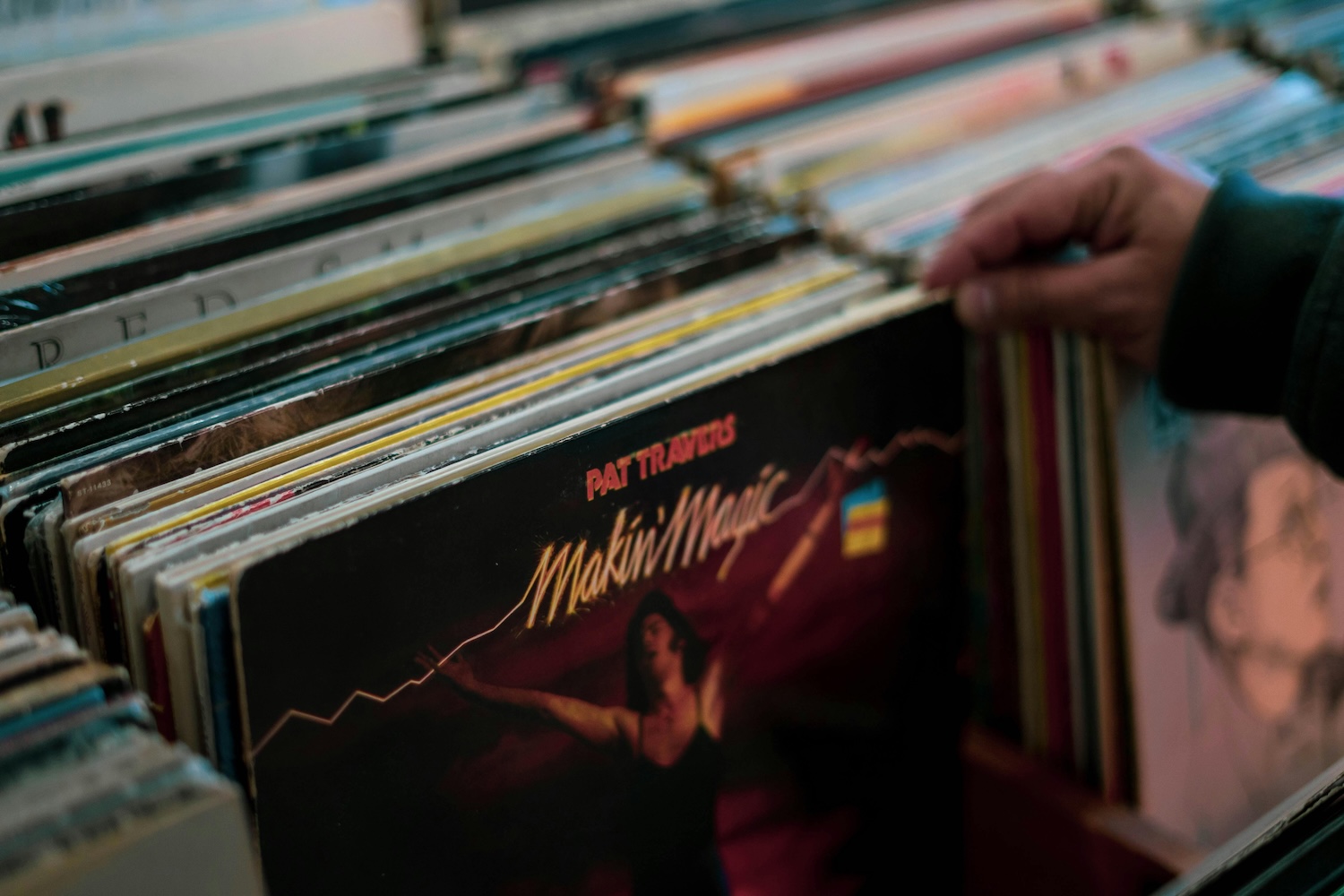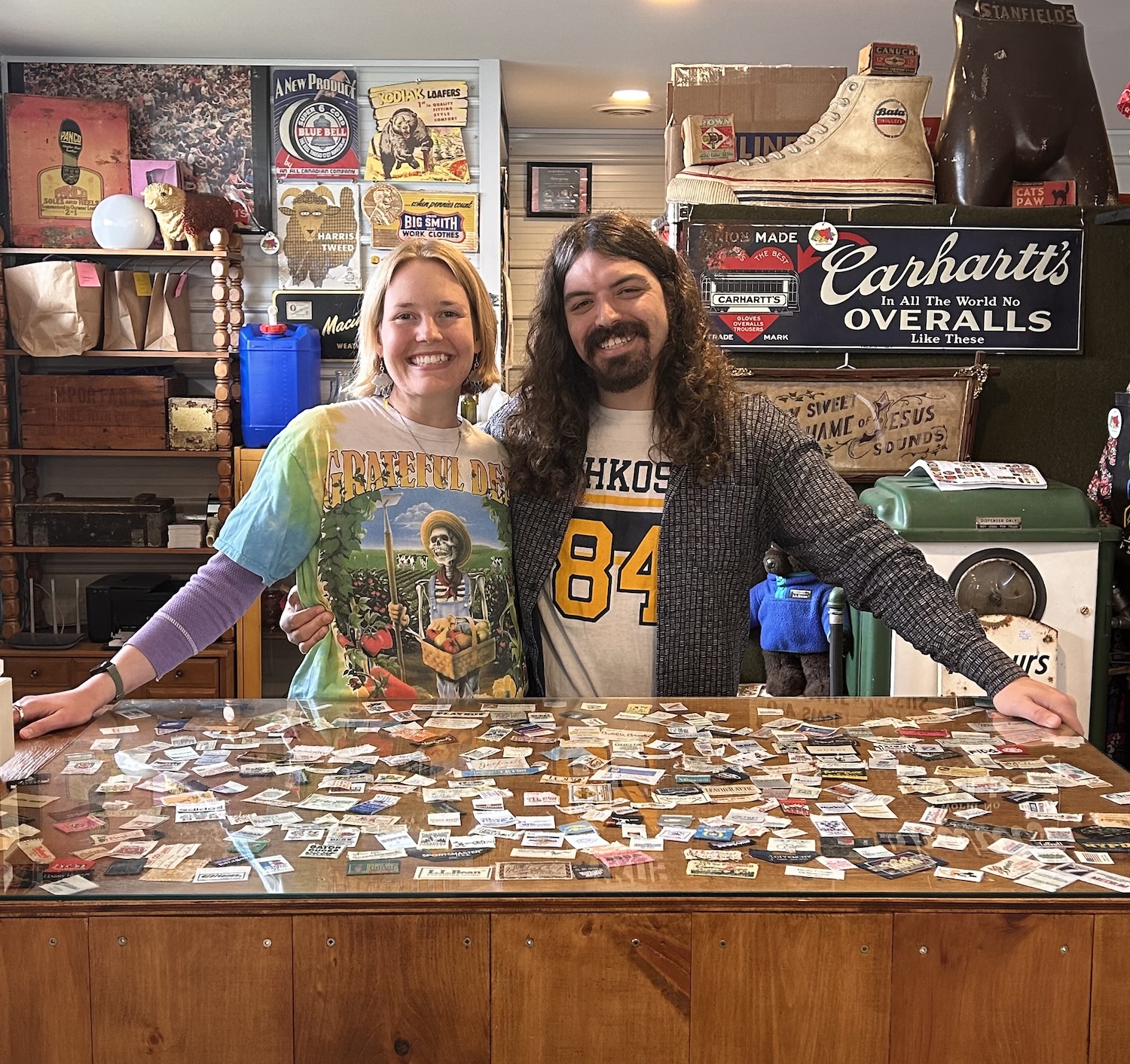.jpg)
Show the “special”: How to thoughtfully give vintage and secondhand gifts
If you’ve never considered giving vintage or secondhand items as gifts, this is your year! Read on for some handy tips on making the most out of your thoughtful gesture
Ed. note: This article was originally published on Dec. 13, 2023, and has been updated for 2025.
Strolling into a vintage shop close to the holidays, I can’t help but wonder how many of the items started their lives as holiday gifts.
A gleaming Corningware bowl set could’ve been nested neatly under a tree in 1957. A first-edition copy of To Kill a Mockingbird might have been gifted at Hanukkah 1960. A fringed leather jacket was perhaps bought on a whim on a December date night in 1974.
Giving vintage gifts at the holidays simply adds another chapter to those stories. What’s more nostalgic and holiday-magic than that?
Sarah Israel, founder of Dwelling on the Past and a member of The Vintage Seeker, says secondhand gifting gives items a new life. “It’s about bringing treasures back to the surface,” she says.
“What’s treasure is to you is different than what treasure is to someone else — and that’s what makes it so fun and eclectic.”
Vintage gifts might be the default for vintage-loving folks, and shopping secondhand might be more popular than ever. But there’s still lingering social stigma around giving used goods as gifts.
Let’s look at some of the groups who embrace gifting secondhand. According to a study from resale retailer Trove, 67 per cent of millennials say they’d be likely to give a pre-owned gift, and 74 per cent say they’d like to receive a pre-owned gift.
In its 2022 Thrift for the Holidays report, secondhand fashion e-retailer thredUP found 72 per cent of Gen Z shoppers said they’d be open to receiving a secondhand gift.
That’s roughly three-quarters of millennials and Gen Zs who were open to secondhand gifting. Why is it getting more popular?
Well, according to the same thredUp study, nearly half of consumers were considering buying secondhand gifts last year in order to save money, shop more sustainably and give a gift that was unique. Sixty-two per cent of all 2,000 consumers polled in the report say that giving secondhand gifts is more socially acceptable than it was five years ago.
In 2025, it's not just millennials and Gen Zs who are considering secondhand anymore. The Retail Council of Canada (RCC) found that 44 per cent of all Canadians were considering gifting secondhand for affordability and uniqueness.
Are vintage and secondhand gifts "acceptable"?
If you’re still not sold on the idea, let’s unpack why pre-owned gifts have been seen as less socially acceptable. To do so requires acknowledging that the people who made the decisions on what was “acceptable” were people who had the means, access and privilege to buy new at the time.
In the height of the “keeping up with the Joneses” era, which started in the 1910s and picked up again in the post–World War II boom, conspicuous consumption and buying new were signs of status and wealth.
As a result, things that were pre-owned or “used” were considered to be worth “less” in the eyes of the social rulers of the time. By extension, low-income groups who had to prioritize affordability and couldn’t shop new were seen as having “lesser” status.
But pre-owned goods are not less-than. Neither are the people who purchase them. And a preference to give or receive pre-owned gifts isn’t necessarily indicative of one’s socioeconomic position.
Thrifting gifts may well be a more affordable way for some to participate in gift-giving, but it's also a more sustainable way to participate in gift-giving.
A product that’s been gently used still has a lot of life left for someone else to enjoy — a crucial mindset shift for a throwaway culture that sees 85 per cent of all textiles hit landfills every year.
And something being pre-owned does not automatically lower its monetary value or perceived value — especially in the case of vintage or antiques, where value might actually increase with time. Nor is giving a pre-owned gift a signal that you are “re-gifting” or re-circulating your own items.
Continued below
Find vintage and secondhand gifts at a market near you
View event calendar
Continued from above
So if you’ve never considered vintage or secondhand as a gift, challenge yourself to ask what is behind that decision. And read on for some ideas on how to make these thoughtful purchases extra-special.
How to thoughtfully give a secondhand gift
1. Include a handwritten note.
When gifting secondhand, add some extra context for your recipient to let them know why you selected this item specifically for them.
Include a handwritten card that lays it all out: explain why you wanted to give that vintage item, and why it made you think of the recipient. Include which vendor you shopped with and a story about that experience, if appropriate. If there are historical details or care instructions, include those too. And if gifting clothing, blankets or other textiles, indicate the item has been washed.
“You want to tell the story of it versus just giving it to someone so they don’t think it’s a re-gift when in fact it was very thoughtful,” says Sarah at Dwelling on the Past.
Imagine receiving a set of vintage champagne flutes from a friend with a note that says they originally were a housewarming gift in the 1960s — and when they saw the flutes, they thought of all the celebrations you’ve shared together and they can’t wait for the next time you get to toast your friendship. What better way to feel special?

2. Mix old with new.
If your giftee is new to the secondhand world, try mixing something old with something new. It acknowledges where they’re at, introduces them to something secondhand, and shows that you put thought into the pairing.
Perhaps a box of vintage carving knives alongside a new wooden cutting board, vintage barware with a new cocktail book, vintage candle holders with new candles, a vintage cake stand with ingredients to bake a fancy cake, or a vintage denim jacket to pair over a new hoodie.
Or what about pairing a secondhand item with a new experience? Vintage wine glasses to go along with a wine tasting tour reservation. Or a vintage playbill of Thoroughly Modern Millie with tickets to see the play.
For a more affordable option, how about a vintage picnic basket with an IOU for a day spent relaxing in the park or at the beach?
3. Put care into the package.
Gifting secondhand doesn’t mean you can’t get creative with your presentation, says Sarah of Dwelling on the Past. “You can still package it really nicely,” she says.
For more eco-friendly options, try a reusable fabric bag, kraft paper with eye-catching twine, vintage holiday paper or secondhand linens wrapped with a fabric bow.
Or hit up the supply of gift bags that you’ve kept over the years and find a special one that hides what’s inside. A bit of ribbon, a classic ornament dangling off the side, or a vintage keychain can all add an extra final touch.
Vintage gift ideas
Anything you think of new — chances are you can find a special secondhand piece in its place.
- Artwork or framed prints
- Baking dishes
- Band T-shirts
- Barrettes or hair clips
- Books (rare edition is a choice move!)
- Board games, chess sets, puzzles (check for all the pieces!)
- Cameras
- Cake stands
- Carving sets
- Classic video games
- Collectible toys (bonus points for ones that remind you of a memory!)
- Cookbooks
- Crafting supplies (sewing notions, yarn — make a basket of fun items!)
- Crocks or pitchers
- Designer handbag or wallet
- Jewellery
- Jewellery box
- Kitchenware/dishes
- Linens, placemats, tea towels
- Maps of a special place
- Mirrors or frames
- Mugs
- Music instrument or sheet music
- Newspapers from the year they were born
- Outdoor knives
- Postcards or stationery
- Purses
- Quilts
- Recipe box with handwritten recipes
- Records
- Ring dish or small trinket box
- Scarves
- Servingware (platters, casseroles, etc.)
- Signs
- Sunglasses
- Sweaters (grandpa, hoodies, cashmere, ugly Christmas, etc.)
- Tabletop decor
- Tea or coffee paraphernalia
- Toys or comic books
- Typewriter
- Vases or flower pots
This article originally appeared in the digital edition of our 2023 Vintage Gift Guide.
Thank you for valuing our work!
Support our work to see this page.
You’ve got a good eye, but this gem is only available for members. Register for a plan or upgrade your current one to peek behind this vintage curtain, or log in below.















